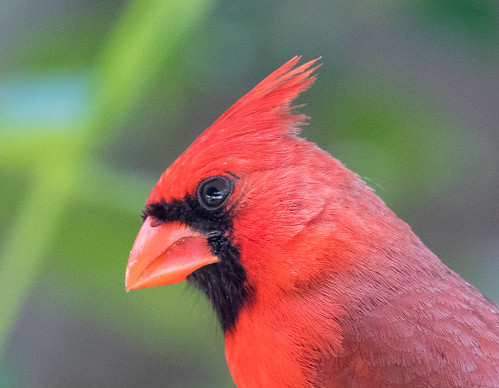Every now and then I wish I were a bird. Not so I could fly high in the sky, above the clouds, or look down upon the world from an aerie—I’m scared of heights. Of course, being a bird might put an end to that, but flight is not why I envy birds.
I envy them for their feathers, especially the skin protection feathers afford. Those of us poor, bare forked animals out on Lear’s heath can get too cold or too hot without the insulation feathers afford; we can get soaking wet without the rain resistance of well maintained plumage; and we can get skin damage without a covering of feathers to protect us from the sun. Once baby birds feather out, they are usually well protected except for those poor unfortunate Blue Jays and cardinals that molt all their head feathers simultaneously.
I’ve just about always been careful about using sunscreens and sunblock, and almost always wear a hat. Even if sometimes it’s just my Cubs baseball cap, it still has a nice shading brim, and more often I wear my Tilley wide-brim hat. Protecting myself from sun isn’t a recent habit—I burn easily, never enjoyed sunbathing, and you can count the number of times I’ve worn a swimsuit on a beach in my entire lifetime with the fingers on one hand. But for any birder, sun exposure is an occupational hazard, and that’s even more true for a bird photographer. No matter how much sun block I put on my nose, and no matter how often I put it on, it smears off on my camera. That’s one reason I like my Canon 80D rather than one of their more professional lines—it has a swivel LCD screen, which I can keep closed while shooting so I don’t damage it. But that protects my camera, not my nose. When I had breast cancer, a genetics-screening showed I have what’s called the ATM mutation, which is associated with several cancers. It seems to make it harder for cells to repair themselves after minor damage, such as radiation, so I may just be genetically more vulnerable.
So far, ironically, my nose hasn’t developed skin cancer. I had two basal cell carcinomas removed in December 2014, one along the hairline on my forehead, in an area that has always been covered by my thick Irish hair as well as a hat, and one next to, but not on, my nose. Then last month during my routine annual checkup, my dermatologist found another one, this one in the narrow area between my nose and my lip. These were all easily and safely removed via what’s called Mohs surgery. The procedure, which is rather like mining for cancer cells, removes a layer where the cancer was detected, and based on what shows up in a microscopic examination, a second layer may be removed, and another, until the margins are cancer free. I had the procedure done on Monday morning, and my dermatologist had to go in a second time but only in one quadrant, and that was that. Even with stitching my face up, the whole thing was done by noon.
I’ll have to be careful this spring and summer to protect the surgical site—I’ll probably wear a small bandage over the wound whenever I’m outside until I’m completely healed. We who love nature have to find our own ways of dealing with the sun. Hats and sunblock are of course vital. Birds do their best to help us, maximizing their singing around dawn rather than when the sun is highest and most deadly. Indeed, the worst time for watching and photographing birds is when the sun is highest, both in terms of how cooperative the birds are and in terms of how much glare the sun produces in our photos. I’ll keep on keeping on as long as my body lets me, and I’ll keep trying to take care of it on general principle—after all, it’s gotten me this far. Watching birds may increase my risks of skin cancer, but it’s also a major part of what gives my life joy and meaning. And any time of day at any point in our lives, that’s what really matters.
